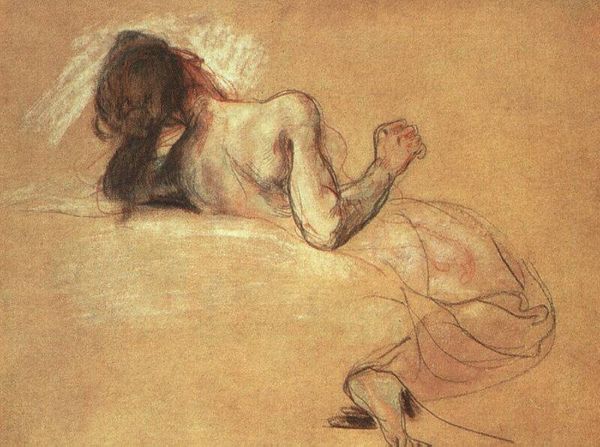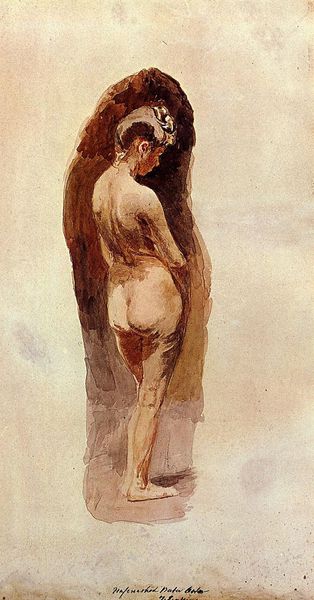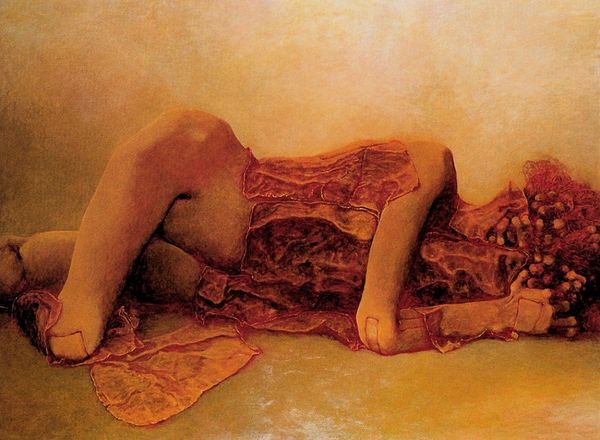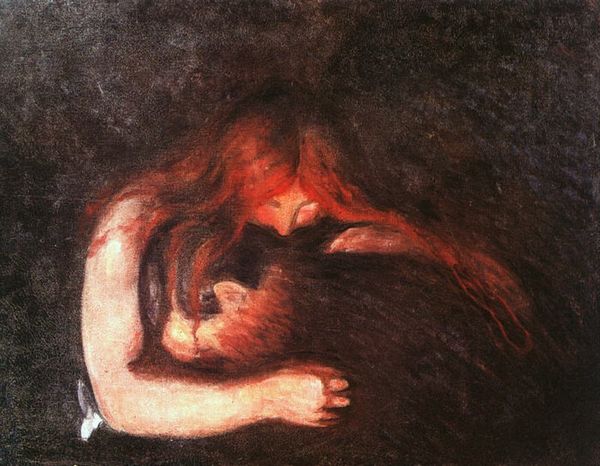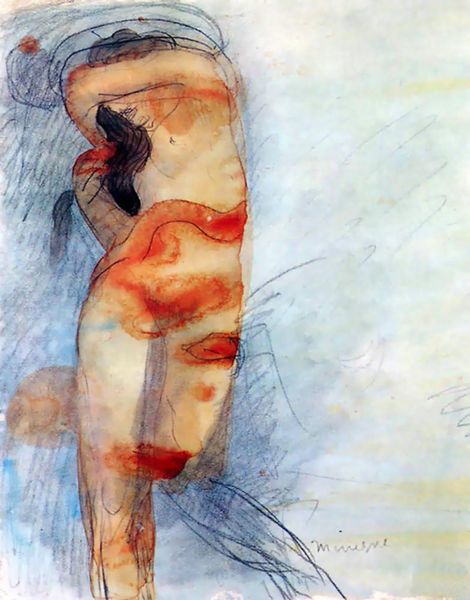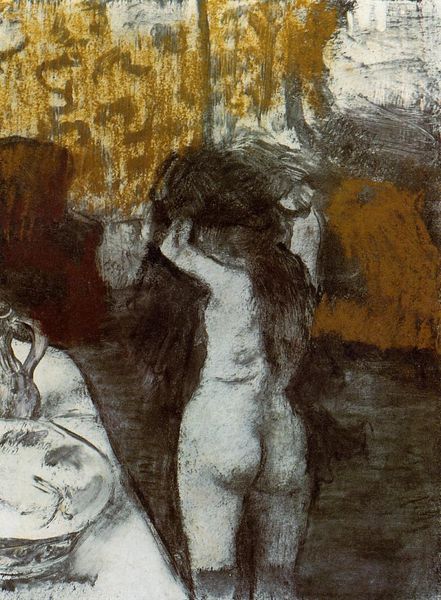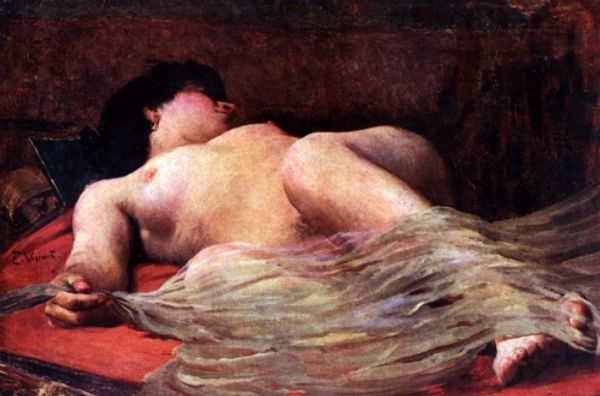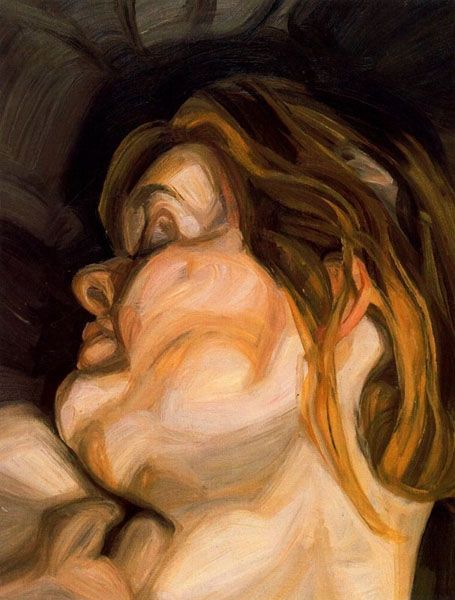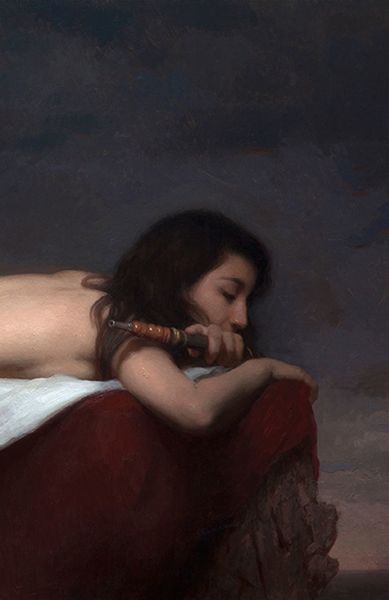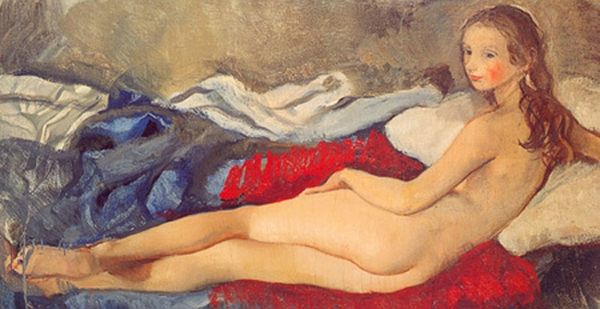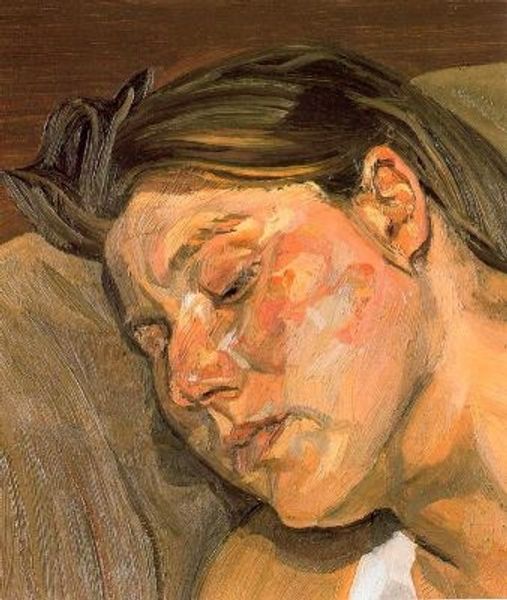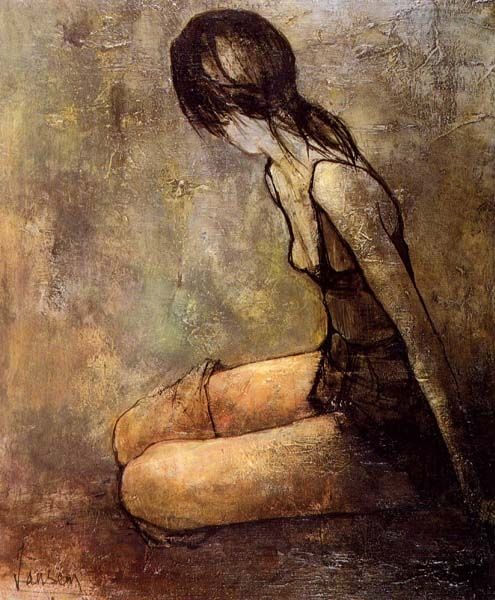
Copyright: Public domain
Editor: This is "Bust of a woman" by Eliseu Visconti, painted in 1895 using oil paint. The textures in the painting, especially on the pillow and the woman's skin, make me think about the physical act of painting itself. What catches your eye in this work? Curator: What I find compelling is how the artist, through the very materiality of the oil paint, is participating in and perhaps challenging the societal views of women at the time. Think about the labour involved in creating these pigments, in stretching the canvas. The final brushstrokes aim to do what, exactly? Is this painting intended to be decorative? A study of form? Or is it a commodity meant to signify status? Editor: I hadn’t considered it in terms of the societal view of women, that's thought-provoking. Is the impressionistic style a conscious choice to either align or distance Visconti from how women were regarded during his time? Curator: Precisely! Impressionism, with its focus on fleeting moments and subjective experience, allowed artists to break away from academic traditions that often objectified the female form. The rough brushwork, the almost unfinished quality… Do you think those choices were meant to highlight the artist's process and subvert traditional notions of beauty, or perhaps even challenge the viewer to confront their own gaze and expectations? The very act of depicting a woman this way, in 1895, begs the question: What purpose does she serve? Editor: That’s really insightful. Considering the painting's materiality and the historical context definitely opens up new layers of meaning. I had approached it more from a formal perspective initially. Curator: Indeed. By examining the social and material conditions of its production and reception, we can move beyond mere aesthetics. How does knowing the piece was constructed influence its significance to us? Editor: It makes me think about how we value art and whose stories are being told through these materials. I will definitely reflect more on this piece! Curator: Wonderful. Consider the agency of not only the painter, but his model and his patron. Now we can examine through different perspectives.
Comments
No comments
Be the first to comment and join the conversation on the ultimate creative platform.

